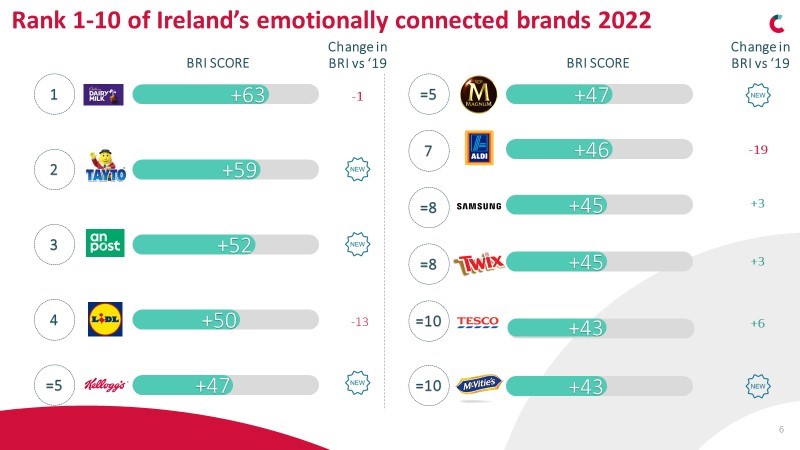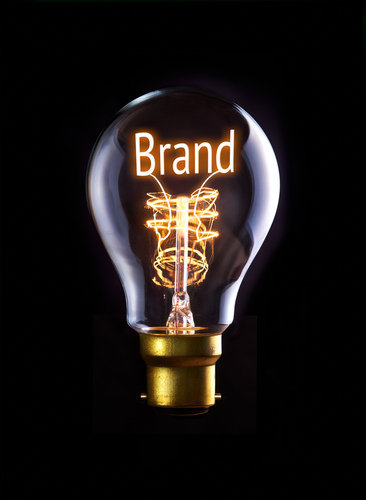 Ciara Reilly of RED C examines the findings of the most recent Brand Reaction Index and asks the million dollar question about how emotionally connected are consumers to brands?
Ciara Reilly of RED C examines the findings of the most recent Brand Reaction Index and asks the million dollar question about how emotionally connected are consumers to brands?
How do we choose brands? While the industry may like to think that consumers think long and hard about every brand choice, the evidence suggest this simply is not the case. Instead people actually tend to make fast “good enough” brand choices based on mental shortcuts.
Certainly there are some brand choices that go through the decision tree of price, brand, etc., but even when this does happen, the brands that come to mind in the first place are decided based on the above three shortcuts.
Behavioural and marketing scientists like Gerd Gigerenzer and the Ehernberg Bass Institute have done extensive work in this area to prove time and time again that a brand that is (mentally and physically) available, easily recognised and evokes positive emotional feelings is more likely to be chosen than one that is not. To deliver a successful brand, you need to get these right.
But getting all three ingredients right isn’t easy and to help brands on this journey, we at RED C have created a number of effective measurement tools, each designed to measure and track availability, recognition and feelings.
To measure availability, we can use a Category Entry Point assessment. To determine if a brand is easily recognised, we can use our Distinctive Brand Asset tests. To measure if a brand evokes positive feelings, we use our Brand Reaction Index (BRI).
RED C’s Brand Reaction Index uses facial expressions as short cuts for emotions. We show a series of faces and then show a random selection of brands one at a time. Each time a brand is shown we ask consumers to choose as quickly as possible the emotion that they feel when they see that brand.
In June 2022 we completed our second national BRI test in Ireland to identify Ireland’s Top 100 Emotionally Connected Brands. Our first test, conducted in April 2019 gave us a glimpse of pre-pandemic successful brands, so what has changed?
When we look at the brands that featured both in 2019 and again in 2022, there is a net improvement in emotional connections (+3 points). Some of these very positive, Visa (+13 points) and Mastercard (+16 points,) both benefiting from increased contactless habits borne during COVID that delivers greater levels of ease to the customer and retailer alike.
Others however bear the brunt of a post Covid-19 world of pent-up demand, staff shortages and increasing legislative requirements. In particular we see Dublin Airport, one of the best loved top 10 brands from our 2019 research falling out of the top 100 as this research conducted in June 2022 amplified the challenges it faced at the start of the holiday season.
This year we also added in a number of new brands, increasing our total number of brands tested from 100 to 137. We can now see the emotional strength that some of the new FMCG brands have with consumers, with 6 FMCG brands featuring in the top 10. But it is not just FMCG that moves into the top 10, we also added in An Post this year, and it went straight to the top, taking 3rd place and placing itself firmly as the leading service brand in Ireland in terms of emotional connections.
Another interesting trend is evident among the major grocery retailers with Lidl, Aldi and SuperValu all recording reduced levels of emotional attachment with consumers vs 2019. That being said, Lidl, Aldi and Tesco all remain in the top 10. It does prompt the question of whether the current financial squeeze has negated all the positive initiatives activated by these retailers during the pandemic. Are shoppers that quick to forget?
The current financial situation also impacts on Utility providers who are struggling to evoke strong connections. Not one of Ireland’s customer facing energy suppliers makes it into the top 100 brands. ESB Networks however does make an appearance as a new brand tested this year, ranked #55.
Other brands that have done well over the past 3 years include The National Lottery with BRI improving by +11 points since 2019. Looking at their recent advertising activity, their emotionally charged brand led advertising seems to be doing the trick in terms of improving brand sentiment.
Irish Life too has improved its BRI score by +12 points and is now ranked #24, placing itself and its health sub-brand, Irish Life Health (ranked #27) firmly within the leading brands in Ireland.
So, is this just a bit of fun or does it really matter? Our work suggests it is vitally important as one of the key shortcuts to deliver brand choice. The higher the BRI score, the more likely a brand is to be chosen vs. competitors (assuming of course that the other two properties of being available and easily recognised are also true).






















